Snakes and humans have developed a bad rapport over the past few decades. It’s instinctive that a human kills a snake on seeing it, irrespective of whether it is venomous or not. A vast majority of the snake species are non-venomous and harmless. However, the common perception is that all snakes are venomous. So, to educate each other, World Snake Day is celebrated annually on 16 July at Vizag and the rest of the world. This day also marks an important contribution to the cause of conservation of these sometimes dangerous, but mostly misrepresented, reptiles.
Yo! Vizag celebrates World Snake Day 2021 by getting in touch with Mr Murthy Kantimahanti, a Conservation Practitioner at Eastern Ghats Wildlife Society (EGWS), Visakhapatnam, to decode the venomous snakes of India. He also threw light upon the lesser-known facts about snakes and educated us on the symptoms, and first aid to be taken, when a venomous snake bites.
Venomous Snakes of India
There are over 300 species of snakes in India. However, only a few of them can be distinguished and identified as venomous or non-venomous. To start off with, here are the four main venomous snakes species that need special concern, especially in the Eastern Ghats region. Around 50 to 60 thousand people die every year because of these four snakes.
#1 Cobras
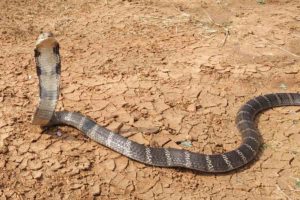
The cobras are widely identified with a hood that is widespread and predominant amongst them. Grabbing the top spot in the food chain of snakes, King Cobras are the only species that feed on snakes. King Cobras also control the population of venomous snakes. They are distributed in the Western as well as the Eastern Ghats. In the Eastern Ghats, it is found in all three districts including Visakhapatnam, Vizianagaram, and Srikakulam.
#2 Russell’s Viper
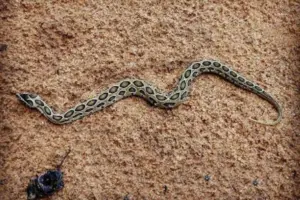
Vipers have triangular heads and can be distinguished by the markings on their bodies. They have chain-like diamond-shaped markings. It belongs to the Viperidae family that is a native of the Indian subcontinent. Russell’s Viper is haemotoxic, which means the venom acts on blood.
#3 Common Krait
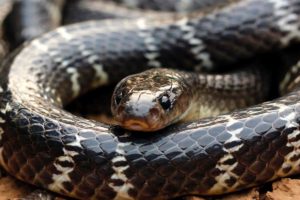
This species of snake is most active during the night. It’s a very small snake compared to the others but is very toxic. The Common Krait can be distinguished by white ring-like markings along the body and more prominent on the tail. The whole species looks blackish or bluish. The Krait’s venom is neurotoxic, which means the venom acts on the nerves and the central nervous system.
#4 Saw-scaled Viper
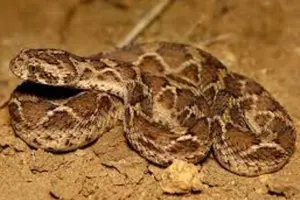
This species exactly looks like Russell’s Viper but the colouration is different. The vipers are named Saw-scaled as they have a pattern like the teeth of a saw all along the body and an arrow-shaped mark on the head. They can easily be identified by their size as they are very small. An adult Saw-scaled Viper doesn’t grow larger than one foot. They can be found in predominantly dry areas.
Lesser Known Facts About Snakes
On the occasion of World Snake Day 2021, here are some facts that people of Vizag should know:
- Snakes don’t have external ears They have internal ears and can feel the vibrations on the ground they are travelling on. This helps them detect movement around them.
- Snakes eyesight is not greatly developed, and can only prominently see moving objects prominently
- Snakes follow a visible movement. Therefore, when a snake charmer moves the pipe, the snake sways along. Fun fact, ask a charmer to stop moving the pipe and the snake won’t move at all.
- Snakes smell through their tongue. Though snakes have nostrils they use their tongue to smell. Snakes flicker their tongue to figure out what is going on and not to threaten anyone. They collect chemical particles in the air through the tongue and with the help of the Jacobson’s organ in their anatomy, they identify who is around.
- Snakes may seem slimy but have shiny dry scales. Due to the reflection, it appears slimy.
- Snakes are the only vertebrate species and have an evolutionary history
- Almost all snakes can swim very well
- Snakes take no vengeance and this is only a myth
- Snakes are only guided by instincts. They can barely think of food, finding a mate and defending themselves. Scientifically they are very primitive and can’t think of things beyond the immediate needs of survival.
- The vast majority of snakes in India are non-venomous. 50-70 % of the snake species are harmless. They neither have venom or fangs by birth.
Symptoms of a venomous snake bite
Within 15-20 minutes of a snakebite, the first symptom that it is venomous is that it starts painting severely. This is followed by swelling, vomiting sensation and discolouration of the part the snake has bitten.
In the case of a non-venomous snake bite, one can find teeth marks. It leads to external wounds and severe bleeding but doesn’t result in pain.
Basic First Aid In Case Of A Venomous Snake Bite
- Keep calm and do not get anxious
- Remove any kind of rings or bracelets, and ensure the affected person doesn’t move a limb or run
- Avoid tying a cloth, as this paves way for the venom to spread faster and further in that area. Sometimes, tying a cloth can also lead to amputation of the limb.
- Carry the person and ensure downward blood movement.
- Call for help and provide for professional and medical attention
Yo Vizag also spoke to Mr Rahul Pandey (IFS), Chief Conservator of Forests (Wild Life), Government of Andhra Pradesh to know about the conservative initiatives to protect snakes.
The Forest Department of the Government of Andhra Pradesh, Eastern Ghat Wildlife Society (EGWS), and Madras Crocodile Bank Trust (MCBT) have come together to work towards the conservation of King Cobras. These organisations have identified that the King Cobras come close to residential areas in villages and have been killed. The primary object was to reduce the response time. Awareness programmes were conducted to immediately notify on identifying a King Cobra. Teams have been arranged to rescue the snake and leave it in the forest. This initiative began in the year 2018, and within 3 years, over 25 King Cobras have been rescued. These three organizations also rescue and protect other snakes.


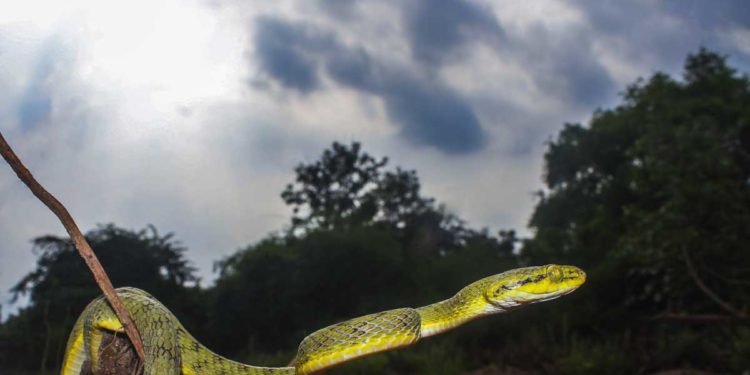





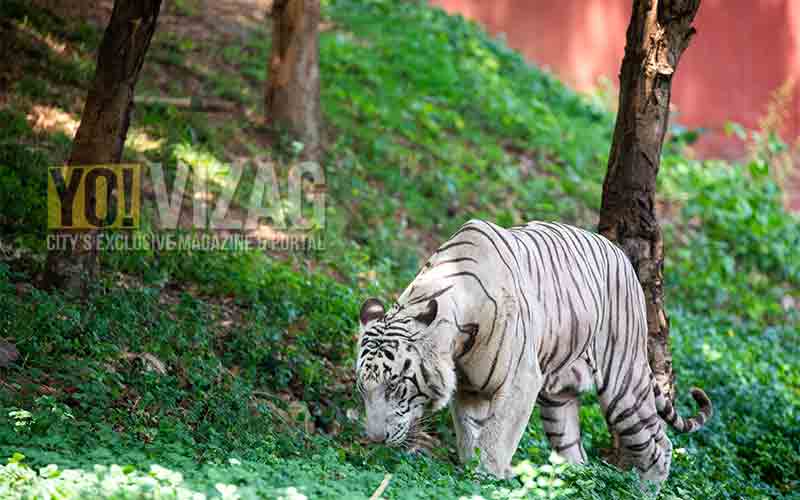

Discussion about this post